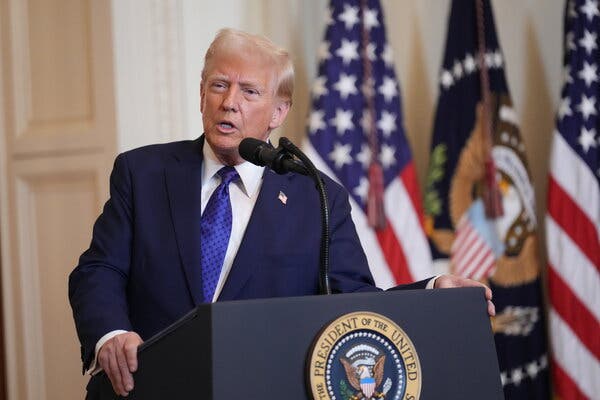Significant Tariffs On Southeast Asian Solar Imports: The US Imposes Up To 3,521% Duties

Table of Contents
Impact on US Solar Panel Prices and Availability
These substantial tariffs will inevitably drive up the cost of solar panels in the US market. Increased import costs will be passed onto consumers and businesses, making solar energy less affordable and accessible. This price hike could significantly slow down the already challenging process of transitioning to cleaner energy sources. We can expect:
- Increased costs for residential and commercial solar installations: Homeowners and businesses will face higher upfront costs for solar panel installations, reducing the financial attractiveness of solar power.
- Potential delays in large-scale solar farm projects: The increased cost and potential supply chain disruptions could lead to delays and cancellations of major solar farm developments, slowing down the expansion of renewable energy capacity.
- Increased competition from domestic manufacturers (if any): While some argue the tariffs protect domestic solar manufacturers, the limited domestic production capacity might not be sufficient to meet demand, leading to continued price increases.
- Impact on the affordability and accessibility of solar energy for consumers: The higher prices could disproportionately impact low- and middle-income households, making solar energy an unattainable option for many.
The Southeast Asian Solar Industry's Response
Southeast Asian solar manufacturers, a major supplier to the US market, are facing a severe crisis. The extremely high tariffs threaten their viability and could lead to significant job losses. Their responses might include:
- Potential job losses in Southeast Asian solar manufacturing: Factories may be forced to reduce production or even close, resulting in widespread unemployment.
- Shifting of production to other regions: Companies might relocate their manufacturing facilities to countries outside the scope of the tariffs, leading to a restructuring of global supply chains.
- Legal challenges to the tariffs: Southeast Asian governments and businesses are likely to challenge the tariffs through legal means, arguing against their fairness and legitimacy.
- Impact on international trade relations: The tariffs could strain US relations with Southeast Asian nations and potentially escalate into broader trade disputes.
Circumvention Attempts and Enforcement Challenges
Given the magnitude of the tariffs, there's a high likelihood of attempts to circumvent them. This creates significant enforcement challenges for US Customs and Border Protection (CBP). We might see:
- Re-routing imports through other countries: Companies could ship solar panels through intermediary nations to avoid the tariffs.
- Mislabeling of products to avoid tariffs: False declarations and misrepresentation of product origin could become prevalent.
- Increased scrutiny and enforcement costs: CBP will need to dedicate more resources to inspecting and verifying the origin of solar imports, increasing costs for taxpayers.
- Potential for corruption and black market activity: The high tariffs could incentivize illegal trade and bribery, undermining fair market practices.
Political and Economic Ramifications
The political fallout from these tariffs is considerable. Domestically, we can expect intense lobbying efforts from affected businesses, and significant debate within the US government. Internationally, the tariffs could:
- Impact US-ASEAN relations: Strained relationships with Southeast Asian nations could impact broader trade and diplomatic cooperation.
- Potential for trade wars and escalations: Retaliatory tariffs from Southeast Asian countries are a real possibility, escalating into a full-blown trade war.
- Lobbying efforts from affected businesses: Intense lobbying efforts from both sides of the issue will shape the policy debate and future actions.
- Discussions within the US government regarding the tariffs: Internal discussions will likely involve reassessing the effectiveness and consequences of the tariffs.
Long-Term Effects on the US Renewable Energy Goals
The tariffs cast a long shadow over the US's renewable energy ambitions. The higher costs and potential shortages could:
- Slower adoption of solar energy in the US: Higher prices and reduced availability will make it harder for the US to meet its climate goals.
- Increased reliance on fossil fuels: If solar energy becomes less competitive, the US may rely more on fossil fuels in the short term.
- Impact on meeting climate change targets: The slower adoption of solar energy directly impacts the nation's ability to reduce its carbon footprint.
- Potential for alternative renewable energy sources to gain market share: The challenges faced by the solar industry could create opportunities for other renewable energy sources, such as wind power, to gain market share.
Conclusion: Navigating the Complexities of Significant Tariffs on Southeast Asian Solar Imports
The significant tariffs on Southeast Asian solar imports have far-reaching consequences. Increased costs, potential shortages, political ramifications, and threats to renewable energy goals are just some of the challenges. The staggering tariffs, reaching up to 3,521%, present a substantial hurdle for the US solar industry and its efforts to transition towards cleaner energy sources. Stay updated on the evolving situation with these significant tariffs on Southeast Asian solar imports and their long-term implications for the US energy market. Keep an eye on reputable news sources and government websites for the latest developments.

Featured Posts
-
 Roland Garros Upsets Rock The Tournament As Top Seeds Fall
May 30, 2025
Roland Garros Upsets Rock The Tournament As Top Seeds Fall
May 30, 2025 -
 Ne Vykhodite Iz Doma Ekstrennoe Preduprezhdenie Politsii Izrailya
May 30, 2025
Ne Vykhodite Iz Doma Ekstrennoe Preduprezhdenie Politsii Izrailya
May 30, 2025 -
 Analyzing Dara O Briains Brand Of Reason And Humor
May 30, 2025
Analyzing Dara O Briains Brand Of Reason And Humor
May 30, 2025 -
 Public Backlash Massive Petition Demands Jon Jones Be Stripped Of Title
May 30, 2025
Public Backlash Massive Petition Demands Jon Jones Be Stripped Of Title
May 30, 2025 -
 Planning Your Trip To The Epcot Flower And Garden Festival
May 30, 2025
Planning Your Trip To The Epcot Flower And Garden Festival
May 30, 2025
